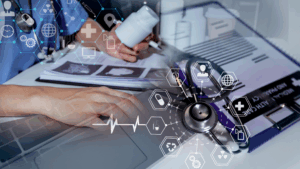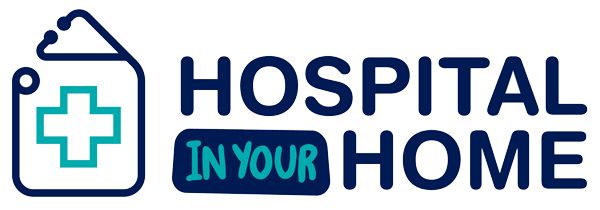
Diving Deep: Remote Monitoring Technologies – What’s Available and How They Work
In today’s interconnected world, the ability to monitor equipment, processes, and even individuals remotely has become indispensable. Remote monitoring technologies offer a powerful way to gain insights, optimize operations, and enhance safety, regardless of physical location. Let’s explore the diverse landscape of these technologies and delve into their inner workings.
What is Remote Monitoring?
At its core, remote monitoring involves collecting data from a distant location and transmitting it to a central system for analysis and action. This enables real-time visibility and control without the need for on-site presence.
Key Technologies and How They Work:
Sensor Networks:
- What they are: Networks of interconnected sensors that measure various parameters like temperature, pressure, vibration, humidity, and more.
- How they work:
- Sensors detect physical changes and convert them into electrical signals.
- These signals are processed and transmitted wirelessly (e.g., Wi-Fi, Bluetooth, cellular, LoRaWAN) to a gateway or cloud platform.
- The data is then analyzed, visualized, and used to trigger alerts or automated actions.
- Examples: Industrial IoT (IIoT) sensors for machine health monitoring, environmental sensors for air quality monitoring, wearable sensors for health tracking.
Wireless Communication Protocols:
- What they are: Technologies that enable wireless data transmission.
- How they work:
- Various protocols cater to different needs, balancing factors like range, power consumption, and data rate.
- Wi-Fi is suitable for high-bandwidth applications within a limited range.
- Cellular networks (4G, 5G) provide wide-area coverage for mobile applications.
- LoRaWAN and Sigfox are low-power wide-area networks (LPWANs) designed for long-range, low-data-rate applications.
- Bluetooth is a short range protocol ideal for personal devices.
- Examples: Using 5G to monitor remote construction sites, using LoRaWAN to monitor agricultural fields.
Cloud Computing and Data Analytics:
- What they are: Cloud platforms provide storage, processing, and analytics capabilities for remote monitoring data.
- How they work:
- Data from sensors and other devices is transmitted to the cloud.
- Cloud-based analytics tools process and analyze the data, identifying trends, anomalies, and patterns.
- Visualizations and dashboards provide real-time insights to users.
- Machine learning algorithms can be used to provide predictive maintenance, and other advanced analysis.
- Examples: Cloud-based platforms for monitoring industrial equipment, analyzing patient health data, or managing smart city infrastructure.
Video Surveillance and Remote Camera Systems:
- What they are: Systems that capture and transmit video footage from remote locations.
- How they work:
- Cameras capture video and audio signals.
- The signals are transmitted wirelessly or over wired networks to a central monitoring station or cloud platform.
- Video analytics software can be used to detect motion, recognize objects, and trigger alerts.
- Examples: Security cameras for remote monitoring of homes and businesses, traffic cameras for monitoring road conditions, cameras for remote inspection of pipelines.
GPS and Location Tracking:
- What they are: Systems that determine and track the location of objects and individuals.
- How they work:
- GPS receivers use signals from satellites to calculate their position.
- Location data is transmitted wirelessly to a central monitoring system.
- Other location technologies such as cellular triangulation, and wifi triangulation are also used.
- Examples: Fleet management systems, asset tracking systems, personal safety devices.
Applications of Remote Monitoring:
- Industrial Automation: Predictive maintenance, process optimization, asset tracking.
- Healthcare: Remote patient monitoring, telehealth, medication adherence.
- Agriculture: Precision farming, livestock monitoring, environmental monitoring.
- Smart Cities: Traffic management, environmental monitoring, public safety.
- Logistics and Transportation: Fleet tracking, supply chain management, cargo monitoring.
- Environmental Monitoring: Air and water quality monitoring, wildlife tracking, disaster management.
Benefits of Remote Monitoring:
- Increased efficiency and productivity.
- Reduced downtime and maintenance costs.
- Enhanced safety and security.
- Improved decision-making through real-time data.
- Greater accessibility and flexibility.
Remote monitoring technologies are revolutionizing industries and transforming the way we live and work. By understanding the available technologies and their capabilities, businesses and individuals can leverage these powerful tools to achieve their goals and stay ahead in a rapidly evolving world.
Sources:
- “What is a sensor network?” – IBM. https://www.ibm.com/topics/sensor-networks
- “Wireless Communication Technologies: A Comprehensive Guide” – Digi International. https://www.digi.com/resources/documentation/wireless-communication-technologies
- “What is cloud computing?” – Microsoft Azure. https://azure.microsoft.com/en-us/overview/what-is-cloud-computing/
- “Remote Video Monitoring: A Comprehensive Guide” – Verkada. https://www.verkada.com/blog/remote-video-monitoring/
- “How GPS Works” – GPS.gov. https://www.gps.gov/technical/howgpsworks/
